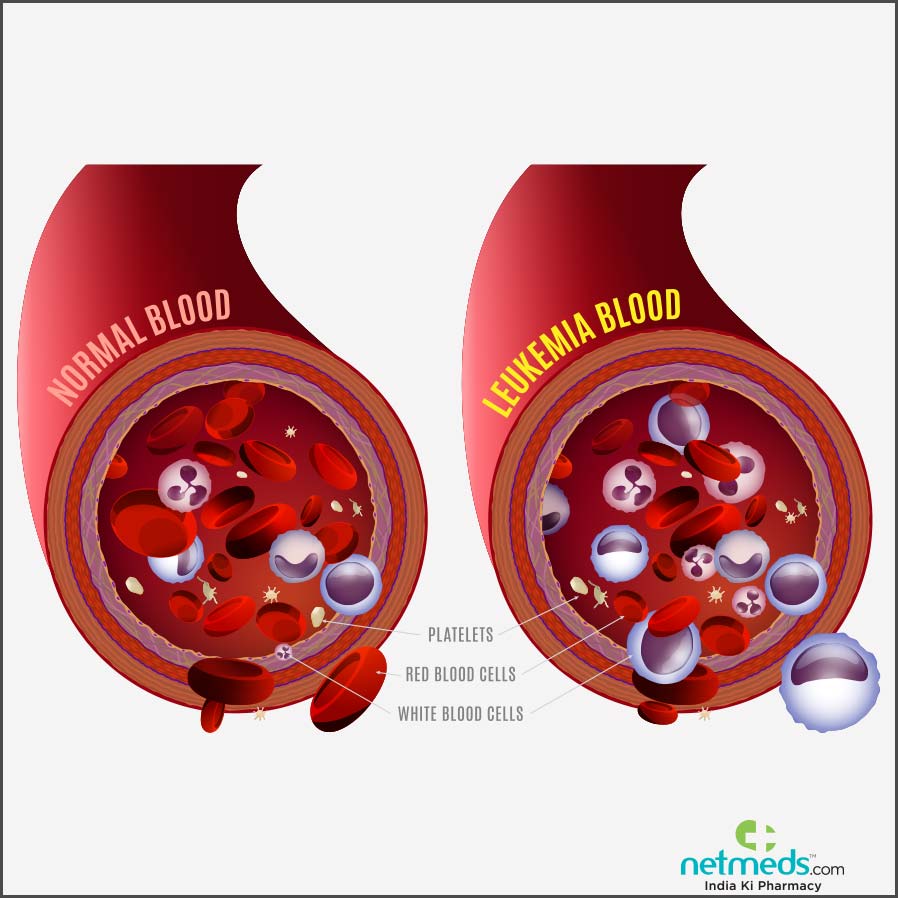Leukemia Cancer
Leukemia is a type of cancer that affects the blood and bone marrow. It is characterized by the abnormal production of immature white blood cells, which crowd out normal blood cells, leading to impaired function of the immune system and other blood-related problems. Leukemia can be acute or chronic and is further classified into different types based on the specific type of white blood cell affected (lymphoid or myeloid) and the rate of disease progression. Here are some key points about leukemia:

- Types of Leukemia:
- Acute Lymphoblastic Leukemia (ALL): A rapidly progressing leukemia that affects lymphoid cells, most commonly found in children but can also occur in adults.
- Chronic Lymphocytic Leukemia (CLL): A slow-progressing leukemia that primarily affects mature lymphocytes, typically diagnosed in older adults.
- Acute Myeloid Leukemia (AML): A rapidly progressing leukemia that affects myeloid cells, commonly found in both adults and children.
- Chronic Myeloid Leukemia (CML): A slow-progressing leukemia that affects myeloid cells, often diagnosed in adults.
- Risk Factors:
- Age: The risk of leukemia increases with age, although certain types, such as ALL, are more common in children.
- Gender: Some types of leukemia are more common in males (AML) or females (ALL).
- Genetic factors: Certain genetic conditions, such as Down syndrome, and family history may increase the risk.
- Exposure to ionizing radiation and certain chemicals: Prolonged exposure to high levels of radiation or certain chemicals may increase the risk.
- Previous chemotherapy or radiation therapy: Previous cancer treatments may be a risk factor for developing leukemia.
- Signs and Symptoms:
- Symptoms can vary depending on the type of leukemia, but common signs include fatigue, weakness, frequent infections, unexplained weight loss, easy bruising or bleeding, and swollen lymph nodes.
- Diagnosis:
- Diagnosis involves blood tests, bone marrow aspiration, and biopsy to examine the number, type, and maturity of blood cells.
- Cytogenetic testing and molecular diagnostics may be used to identify specific genetic abnormalities.
- Staging:
- Unlike solid tumors, leukemia is often not staged in the traditional sense. Instead, it is classified based on the type of cells involved, the rate of progression, and other factors.
- Treatment Options:
- Chemotherapy: The primary treatment for many types of leukemia, involving the use of drugs to kill cancer cells or stop their growth.
- Targeted therapy: Medications that specifically target certain proteins or pathways involved in leukemia cell growth.
- Stem cell transplant: A procedure to replace diseased bone marrow with healthy stem cells, often used in more aggressive cases or after high-dose chemotherapy.
- Immunotherapy: Treatment that stimulates or enhances the body’s immune system to recognize and attack leukemia cells.
- Survival Rates:
- Survival rates for leukemia vary widely based on factors such as the type of leukemia, the patient’s age, overall health, and response to treatment. Some types of leukemia, particularly certain subtypes of ALL in children, have high cure rates.
- Research and Advances:
- Ongoing research focuses on understanding the underlying genetic and molecular mechanisms of leukemia, leading to the development of targeted therapies and more personalized treatment approaches.





